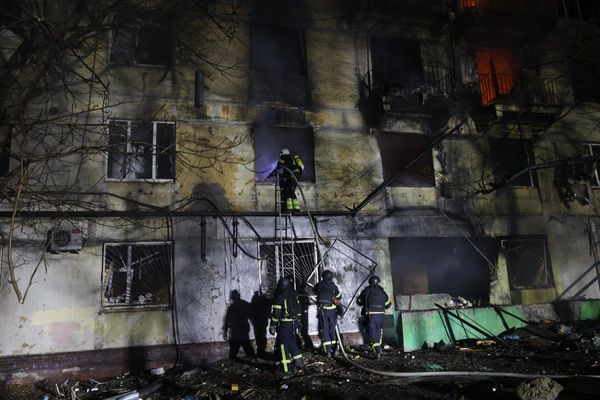
As 2022 nears its end, the national capital’s public transport lifeline, the Delhi Metro, has its advertising space replete with the government showcasing India’s year of the G-20 presidency. But the lead role of the multilateral group, and the entailing 200 meets and the pageantry of the summit to be held next year, are only symbolic side notes to an unusually eventful year in Indian diplomacy.
In many ways, it was a year when a churn in global events and neighbourhood challenges foregrounded and probed India’s foreign policy thinking on many counts.
In turn, New Delhi assessed its priorities and showed diplomatic clarity in its responses to global affairs and international power matrix – even if that has to be followed up with deft navigation. At the same time, in the neighbourhood, the security challenges posed by China and Pakistan continue as key concerns but rebuilding of ties with other neighbours found new thrust.
Amid global tumult, a recalibrated view of reshaped multi-alignment has been the running thread of India’s foreign policy approach this year. It’s an approach which allows India benign placing as an emerging global power while retaining its strategic autonomy. It’s a view that seems to have a wider bipartisan approval. As India’s foreign minister S Jaishankar pitched it as a “stabilising influence” on world order, Congress MP Shashi Tharoor agreed and in a recent essay viewed it as positive leveraging of India’s reach in the “networked system of a multi-polar world order’’.
It was early 2022 that India had to come to terms with walking the tightrope on the Ukraine war in eastern Europe as Russia initiated military action in the last week of February. In the subsequent weeks, India found itself in the position of being the most sought after “swing state” – a country well placed to swing the configuration of heft on either side. India delicately resisted this by simply refusing to swing. New Delhi pragmatically focused on defining “its own side” rather than choosing a side in what increasingly looked like the revival of East-West divide in global power politics.
It wasn’t only about weighing in on time-tested ties with Russia, the military supply line relations with Moscow and Russia’s place in addressing continental security concerns, just as the presence of US, Japan and Australia addresses New Delhi’s maritime security concerns vis-à-vis China. It was also about not being drawn in big power tussles in a distant war theatre where India could assess its stakes as not being significant enough. But, India also made a clear call for finding the solution through diplomatic engagement between Moscow and Kyiv.
India’s reluctance to park itself in any camp has been particularly important at a time when both sides are rushing their interlocutors to New Delhi because the country seems to be the “most sought after swing state” in the international system at the moment. This, however, shouldn’t blur the fact that India advocated a diplomatic way out of the war. And despite its abstentions at the UN vote, its explanatory notes put India’s unease with military action in writing. The fact that both Russia and Ukraine are engaging with India in explaining their stand could be seen throughout this year. As recently as this month, for instance, Russian president Vladimir Putin had a phone conversation with Prime Minister Modi in the mid of this month only to be followed by Ukraine president Zelenskyy speaking to the Indian PM on phone early this week.
In the meantime, even multilateral meets like the Shanghai Cooperation Organisation in the Uzbek city of Samarkand in September were seen as platforms for India to make a mediatory move on the Ukraine conflict. But India had good reasons to stay away from such a role. India has assumed the rotational presidency of the SCO and launched preparations for the next summit. By the time it takes place next year, the region may have to grapple with more challenges, new and old. But India will still resist the lure of mediation, and that at the same time should hold true for its G-20 presidential position.
New Delhi has to be wary of any such expectation as in the current global order, there is a valid view that mediatory roles not only bring little diplomatic rewards, but in the process also expose the extent of bilateral or global clout. In the interest of competitive power projection, it is unwise to fall for the mediatory trap. Moreover, from a different era, though not from the too distant past, India carries the scarred memory of burning its fingers in its Afghanistan mediation efforts in the 1980s. It was talked into mediating by the US, the results of which the Indian government could regret only in hindsight.
This year, Indian foreign policy also saw a mixed bag of building of ties, attempting a reset and grappling with the challenges posed by China and Pakistan. The reset in ties with smaller neighbouring countries has been one of the priorities of the second stint of the current regime in New Delhi, as a JNU-based international relations professor had observed around this time last year. India’s efforts at steadying ties with Bangladesh has been positively reciprocal since the 2015 land boundary agreement. In 2022, Bangladesh Prime Minister Sheikh Hasina’s visit to India in September played its part in further strengthening this though there are concerns about religious militarism on both sides and India is also alert to China trying to extend its heft in Dhaka.
The economic crisis and regime change in Sri Lanka saw India stand in good stead for Colombo and wrest back some diplomatic clout, but China’s long shadow over the island state wouldn’t disappear easily. A case in point was how the Sri Lankan government in August allowed a high-tech and controversial Chinese research ship Yuan Wang 5 to dock at the southern port of Hambantota despite initially showing consideration for India's concerns that it could spy on New Delhi's military installations.
At the same time, in Nepal, the return of the Pushpa Kamal Dahal-led seven party post-poll alliance, including Communist Party of Nepal (Maoist Centre) and the former prime minister K P Sharma Oli-led Communist Party of Nepal (Unified Marxist-Leninist) might make India reconfigure its approach. New Delhi would also be careful in studying the possible Chinese role in this alliance, especially after the Prachanda-Oli rift in January 2021. The Chinese ambassador in Kathmandu had earlier played an active role in the merger of different communist parties in Nepal. However, India had cautiously watched recent polls, and perhaps missed the post-poll alliance scenario. While Prachanda has considerably softened his approach towards India in recent years , his new alliance partner Oli has been taking a hardline against New Delhi and is known for his pro-China tilt.
This has meant that security concerns and India-China rivalry finding a leverage in the regional power in Nepal is likely to enter another round as a new government takes charge in Kathmandu. While the prickly map issue is likely to be shelved in India-Nepal ties as an irritant, the Chinese government would like to iron out the BRI projects and other MoU implementation issues that have been a cause for concern in Beijing’s ties.
Amid such issues, the crucial China question raised its head again this year in Tawang, and the simmering border tensions with Beijing are likely to enter a new phase of uncertainty and possible hostility. To what extent that is a function of India’s presence – as a big challenger to China’s dominant regional status or the contentious border issues or India’s ties with big powers like the US or Beijing’s own internal political dynamics – is something that will engage keen observers of geopolitics in the region.
At the same time, even the change of political executive in Pakistan did little to change the diplomatic inertia that has set in Indo-Pak ties. Besides the zero sum game of exchange of tirades in international bodies like the UN, there was no significant diplomatic movement in either worsening or improving the relationship. India, however, continued to highlight the Islamabad-sponsored proxy terrorism targeting India. The diplomatic parley, however, was nowhere in sight, nor was there any significant hint about back-channel talks.
As India leaves an eventful year of exercising and balancing multi-aligned options in foreign policy, it enters another where it heads two important bodies and has a chance of showcasing its sense of global agenda. This also includes progress on global commons like the climate change mitigation and adaptation talks, where it would be expected to be the voice of the global south or the developing world. At the same time, Indian diplomacy would like to look back at 2022 as a year when it crafted its cautious historical neutrality into a form of multi-aligned worldview, firmly based on strategic autonomy.
Newslaundry is a reader-supported, ad-free, independent news outlet based out of New Delhi. Support their journalism, here.







